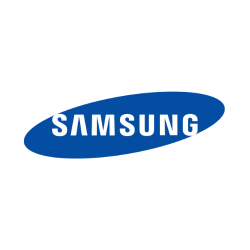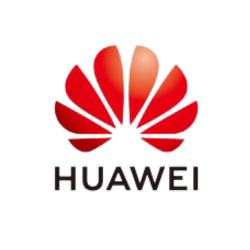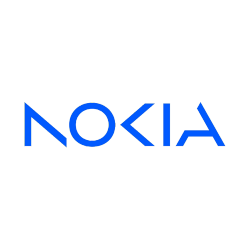Unveiling Sony Ericsson Z310 Specs Pricing Pros & Cons

Introduction to Sony Ericsson Z310
The Sony Ericsson Z310 was a clamshell feature phone that made its debut in December 2006. It was known for its unique design and was targeted at people who were looking for a stylish yet affordable phone. The phone was part of Sony Ericsson's strategy to tap into the market of consumers seeking basic phones with a touch of fashion.
Design and Build
The Z310 featured a compact and lightweight design with dimensions of 87 x 46 x 24.5 mm and a weight of just 90 grams. It was available in three attractive colors: Jetset Black, Lush Pink, and Brush Bronze, appealing to a fashion-conscious audience. The phone’s clamshell design was practical, protecting the keypad and screen when closed.
Display
The Z310 came with a STN display that supported 65K colors. While the size of the screen isn’t specified, it featured a resolution of 128 x 160 pixels. This was typical for feature phones at the time, providing basic visibility for icons and text.
Network and Connectivity
This device supported GSM technology, specifically operating on GSM 900/1800/1900 bands, making it a viable option for many parts of the world. While it lacked advanced connectivity features available in smartphones today, it supported GPRS Class 10 and EDGE.
Memory and Storage
The Z310 was equipped with 14MB of internal storage. It did not have a card slot for expandable memory, which was a limitation for users wanting to store more photos or media. The phonebook could store 1000 contacts with 27 fields, and it also supported photo calls. Call records were also accessible, with a memory capacity for 30 received, dialed, and missed calls.
Camera Features
For its time, the Z310 offered a modest VGA camera with a 0.3MP sensor. While it didn’t support video recording, it served basic photography needs, primarily for capturing simple snapshots.
Battery Performance
The device was powered by a removable Li-Ion 780 mAh battery (BST-36). This battery provided a stand-by time of up to 300 hours and a talk time of up to 7 hours, making it quite efficient in terms of power consumption for basic usage patterns common in feature phones.
Sound and Multimedia
The Z310 was equipped with a loudspeaker and supported various alert types including vibration, as well as downloadable polyphonic, MP3, and AAC ringtones. However, it did not feature a 3.5mm headphone jack, which somewhat limited personal audio experiences.
Communication and Tools
For communication, the device supported SMS, EMS, MMS, and Email, making it versatile for different messaging needs. Trivia and entertainment were supported through downloadable games and Java applications, using MIDP 2.0. This model did not have WLAN but did include Bluetooth and an infrared port for basic file sharing and connectivity with other devices. A proprietary USB was used for wired connections.
Software and Applications
The Z310 operated like a typical feature phone, equipped with a WAP 2.0/xHTML browser and HTML (NetFront) for basic web browsing needs. It also supported RSS feeds, allowing users stay updated with simple news feeds, which was quite useful at a time when constant digital connectivity was not as prevalent.
Market Position and Pricing
This model was an affordable option for consumers, priced at around 80 EUR at launch. It was discontinued a few years into its lifecycle but had carved a niche market among budget-conscious buyers looking for a mix of elegance and minimal functionality.
Conclusion
Overall, the Sony Ericsson Z310 highlighted the balance between style and functionality characteristic of mid-2000s mobile phones. It wasn’t the most technically advanced phone of its time but offered enough features to cater to a segment of users who prioritized design and basic connectivity needs over cutting-edge technology.
Key Features of Sony Ericsson Z310
- Compact and lightweight design: 87 x 46 x 24.5 mm, 90 g
- GSM connectivity with GPRS and EDGE support
- 1.8-inch STN display with 65K colors
- VGA camera for basic photography
- Bluetooth and Infrared capabilities for wireless communication
- Internal storage of 14MB with phonebook capacity of 1000 contacts
- Multiple messaging options: SMS, EMS, MMS, Email
- Removable 780 mAh battery offering up to 300 hours standby time
- Available in multiple colors: Jetset Black, Lush Pink, Brush Bronze
- Affordable price point around 80 EUR at launch
Disadvantages of Sony Ericsson Z310
- No 3G or 4G capabilities, limited to GSM networks only
- Discontinued model, making it difficult to find support or replacements
- STN display with low resolution (128 x 160 pixels) and limited color range (65K colors)
- No external memory card slot for storage expansion
- Limited internal storage of 14MB
- VGA camera with no video recording capability
- No front-facing selfie camera
- No 3.5mm headphone jack
- No WLAN or positioning capabilities
- Proprietary USB connection, not standard
- No FM radio feature

View Also
More Phones
All Rights Reserved +13924 Phones © Mobilawy 2025

























